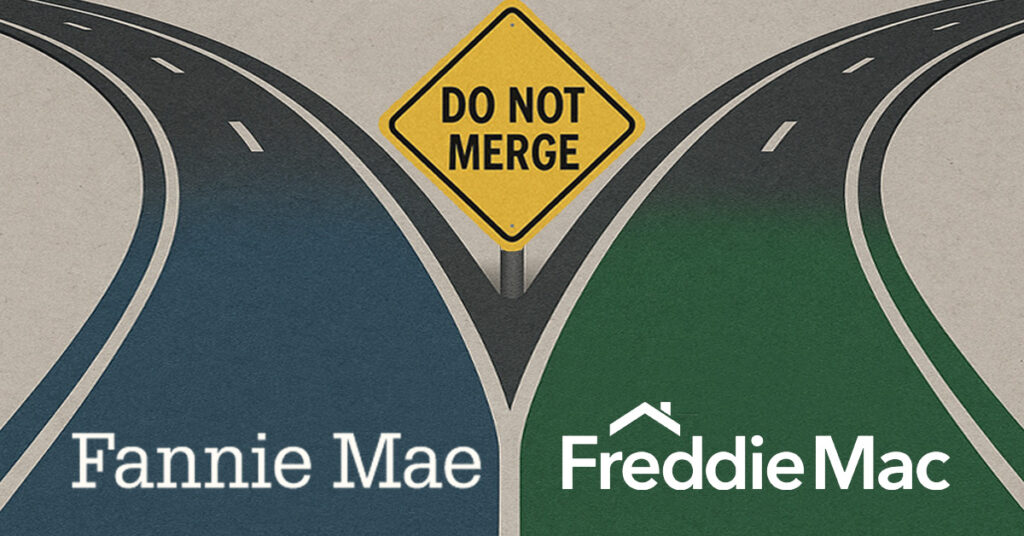Fannie Mae and Freddie Mac should remain two separate companies and not be combined into a single entity, the Community Home Lenders of America (CHLA) believes.
The nonprofit association representing small and midsized independent mortgage banks (IMBs) made that position clear in a letter addressed to Treasury Secretary Scott Bessent and Federal Housing Finance Agency (FHFA) Director Bill Pulte.
The CHLA is asking IMBs to sign on to the letter, which is postdated Sept. 6 and contains several policy recommendations the association thinks would protect consumers and smaller mortgage lenders if the Trump administration follows through on its plans to take Fannie and Freddie public via an initial public offering.
Fannie Mae and Freddie Mac purchase mortgages from lenders, providing liquidity and stability to the mortgage market. The companies have been in federal conservatorship as government-sponsored enterprises (GSEs) under FHFA oversight since the 2008 financial crisis and were delisted from the New York Stock Exchange in 2010.
Details about a potential Fannie-Freddie IPO have been slowly trickling out since President Donald Trump hinted on social media about that possibly in May. Earlier this month, a Truth Social post from the president seemingly implied the companies would go public as a merged entity called The Great American Mortgage Corporation, with an IPO targeted for November.
The CHLA thinks that would be a mistake, arguing that “maintaining Fannie and Freddie as two separate GSEs is vital to competition and market accountability.”
Other CHLA policy recommendations
In the letter to Bessent and Pulte, the CHLA maintains that Fannie and Freddie should preserve what are known as the competitive cash window and “G-fee parity.”
The former refers to the period of time when loans can be directly sold to the GSEs for cash instead of mortgage-backed security swaps. G-fee parity means the narrowing of preferential pricing based on lender size for guarantee fees paid to Fannie and Freddie to cover projected credit losses from borrower defaults.
Get these articles in your inbox
Sign up for our daily newsletter
Get these articles in your inbox
Sign up for our daily newsletter
Additionally, the association argues that Fannie and Freddie should maintain support for what it considers to be “critical mission-based mortgage loan products,” including those for condominiums, second homes, manufactured homes, investor-owned homes and homes in rural areas.
The GSEs should also be allowed to purchase mortgage-backed securities as a way to drive down mortgage rates, the CHLA maintains.
“Fannie/Freddie can help with temporary, opportunistic purchases of MBS to cut mortgage rates,” the letter states.
Finally, CHLA believes the administration should not allow any additional GSE charters for large Wall Street banks, which was an idea floated in Washington in 2017 but not implemented by Congress.
“New GSE charters should not be allowed, giving preferential treatment to a few mega-lenders,” the association writes.
An online form is available on the CHLA website for IMBs that wish to become signatories of the letter to Bessent and Pulte.
“IMBs are the lifeblood of the mortgage finance system, so we are asking all interested IMBs to join in this letter which identifies critical protections to preserve their role in originating Fannie/Freddie loans,” CHLA Executive Director Scott Olson said in a statement provided to Scotsman Guide.








